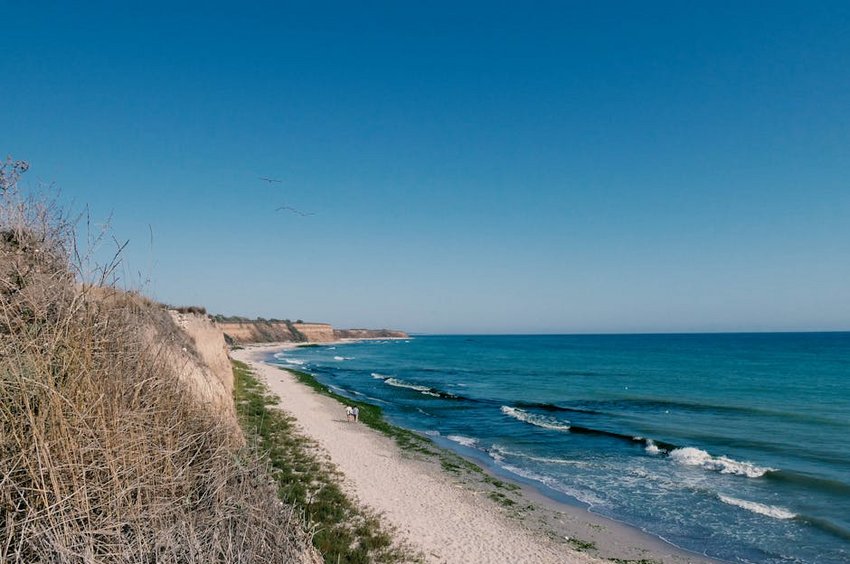Boston Freedom Trail – Walking Through American History
Walking the Boston Freedom Trail is like stepping directly into the pages of American history. This iconic 2.5-mile red brick path connects 16 historically significant sites that tell the story of the American Revolution and the nation’s founding. As you follow the trail through Boston’s charming streets, you’ll encounter everything from colonial meeting houses and revolutionary battle sites to historic burying grounds and iconic ships. The Boston Freedom Trail experience offers a unique opportunity to understand the events and personalities that shaped the United States, making it an essential journey for history enthusiasts, families, and anyone curious about America’s origins. Whether you’re visiting for a day or spending a week in Boston, walking the Freedom Trail provides context and connection to the revolutionary spirit that defined a nation.
Boston Freedom Trail Essential Information – What You Need to Know
Before embarking on your historical journey, understanding the basics of the Boston Freedom Trail will enhance your experience significantly. The trail is marked by either a red brick line or painted red stripe on sidewalks, making it easy to follow without getting lost. Most visitors spend 2-4 hours completing the entire route, though history buffs might want to allocate a full day to explore each site thoroughly. The trail is free to walk, though some historic buildings and museums along the route charge admission fees. You can start at either end—Boston Common or the Bunker Hill Monument—though beginning at the Common provides a more chronological experience of revolutionary events. Comfortable walking shoes are absolutely essential, as you’ll be covering significant ground on both paved surfaces and cobblestone streets.
Historical Significance – Understanding the Context
- The Boston Freedom Trail represents the birthplace of the American Revolution, featuring sites where key events like the Boston Massacre and Boston Tea Party planning occurred
- Several signers of the Declaration of Independence are buried along the trail, including John Hancock and Samuel Adams at Granary Burying Ground
- The trail includes the oldest public building in Boston (Old State House) and the oldest commissioned warship afloat (USS Constitution)
- Budget option: Free self-guided walk (trail only) with optional $5-10 donations at some sites
- Mid-range experience: $15-25 for guided tour plus $10-15 for museum admissions to key sites
- Full experience: $40-50 for all site admissions plus $20-30 for specialty tours or evening events
- Official Freedom Trail Foundation
- National Park Service Boston Sites
Practical Logistics – Planning Your Visit
Boston’s Freedom Trail is accessible year-round, though spring and fall offer the most pleasant walking conditions. The entire route is wheelchair accessible, though some historic buildings may have limitations. You’ll find plenty of restrooms, water fountains, and places to rest along the way, particularly at Boston Common, Faneuil Hall, and the Charlestown Navy Yard. Consider downloading the official Freedom Trail app for audio tours and additional historical context. If visiting during peak summer months, start early to avoid crowds and afternoon heat, and always check opening hours for indoor sites as they can vary seasonally.

Boston Freedom Trail Planning Your Trip – Best Times and Budget
Proper planning ensures you make the most of your Boston Freedom Trail experience while accommodating your schedule and budget. The trail stretches from downtown Boston across the Charlestown Bridge to the Bunker Hill Monument, covering diverse neighborhoods and terrain. Spring (April-June) and fall (September-October) offer ideal weather with comfortable temperatures and beautiful foliage, while summer can be hot and crowded with tourist groups. Winter visits provide a quieter experience but require warm clothing and checking for seasonal closures. Budget-conscious travelers will appreciate that walking the trail itself is free, while those wanting full access to all sites should budget for combination tickets that offer savings compared to individual admissions.
Best Time to Visit Boston Freedom Trail
April through June represents the prime season for walking the Boston Freedom Trail, with mild temperatures between 55-75°F and blooming flowers adding beauty to the historic sites. September and October are equally spectacular with crisp air and fall colors enhancing the experience. Summer months (July-August) can be humid with temperatures reaching 85°F, but longer daylight hours allow for extended exploration. Winter visits from December to February offer the advantage of smaller crowds, though some sites may have reduced hours and you’ll need to bundle up against New England’s cold winds. Weekdays generally see fewer visitors than weekends regardless of season.
Budget Planning and Costs
Essential Preparation Checklist
Preparing properly for your Boston Freedom Trail adventure ensures comfort and maximizes your enjoyment. Start by checking the weather forecast and dressing in layers, as conditions can change quickly in New England. Wear broken-in walking shoes with good support—you’ll be on your feet for several hours covering uneven surfaces. Download maps or the official app beforehand since cell service can be spotty in some areas. Bring a refillable water bottle and snacks, though you’ll also find numerous cafes and restaurants along the route. If traveling with children, consider breaking the trail into two days or focusing on the most engaging sites like the USS Constitution and Paul Revere House.
Boston Freedom Trail Top Attractions and Activities
The Boston Freedom Trail offers an incredible diversity of historical experiences, from solemn graveyards to interactive museums and majestic ships. Each of the 16 official sites tells a unique part of the revolutionary story, with some requiring admission while others are free to explore. Must-see highlights include the Massachusetts State House with its magnificent golden dome, the Park Street Church which hosted abolitionist speeches, and the Granary Burying Ground where revolutionary heroes rest. Faneuil Hall Marketplace provides shopping and dining opportunities amid history, while the USS Constitution Museum offers hands-on naval exhibits. Don’t miss the Old North Church where lanterns signaled Paul Revere’s famous ride, or the Bunker Hill Monument offering panoramic views of Boston.
Must-See Highlights
Among the Boston Freedom Trail’s 16 sites, several stand out as particularly significant and engaging. The Massachusetts State House, designed by Charles Bulfinch, features stunning architecture and important historical artifacts. Paul Revere’s House, downtown Boston’s oldest building, provides an intimate look at colonial life through period furnishings and knowledgeable interpreters. The Old South Meeting House witnessed the planning of the Boston Tea Party and now hosts exhibits about free speech. The USS Constitution, “Old Ironsides,” remains the world’s oldest commissioned warship still afloat, with naval personnel providing free tours. Finally, the Bunker Hill Monument commemorates the first major battle of the American Revolution and offers breathtaking views from its 294-step summit.
Hidden Gems and Local Favorites
Beyond the main attractions, the Boston Freedom Trail contains several lesser-known gems that offer deeper historical insight. The King’s Chapel Burying Ground contains graves of Massachusetts’ first governor and Mayflower passengers, often overlooked by visitors rushing to the more famous Granary Burying Ground. The Benjamin Franklin statue and Boston Latin School site honor America’s first public school and one of its most famous students. Copp’s Hill Burying Ground provides excellent views of Charlestown and the harbor while containing fascinating colonial-era gravestones. Local historians often recommend the African Meeting House, which though not an official trail stop, represents the oldest black church building still standing in the United States and sits just off the main route.
Boston Freedom Trail Practical Travel Information
Navigating the Boston Freedom Trail requires understanding transportation options, accommodation choices, and practical considerations for a smooth visit. The trail begins at Boston Common, easily accessible via the Park Street Station on the Red and Green lines, and ends at the Bunker Hill Monument in Charlestown. While completely walkable, the MBTA’s Charlestown ferry provides a scenic alternative for returning downtown. Numerous hotels ranging from budget to luxury surround the trail route, with the Downtown Crossing, Government Center, and North End neighborhoods offering convenient access. Spring for comfortable footwear above all else—you’ll be walking on brick, cobblestone, and uneven historical surfaces that demand proper support.
| Category | Options/Features | Price Range (USD) |
|---|---|---|
| Budget Hotels | Chain hotels near North Station, basic amenities | $120-180/night |
| Mid-range Hotels | Historic hotels downtown, better locations | $200-350/night |
| Luxury Accommodations | Waterfront hotels, premium amenities | $400-600+/night |


